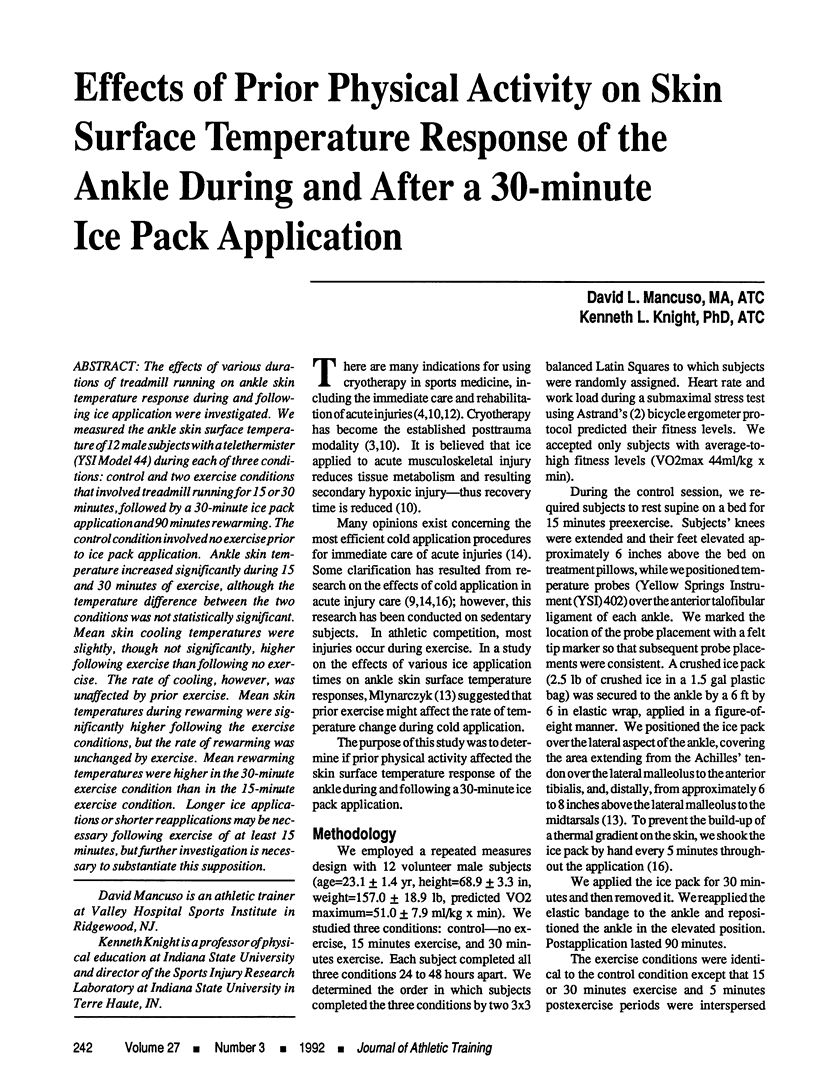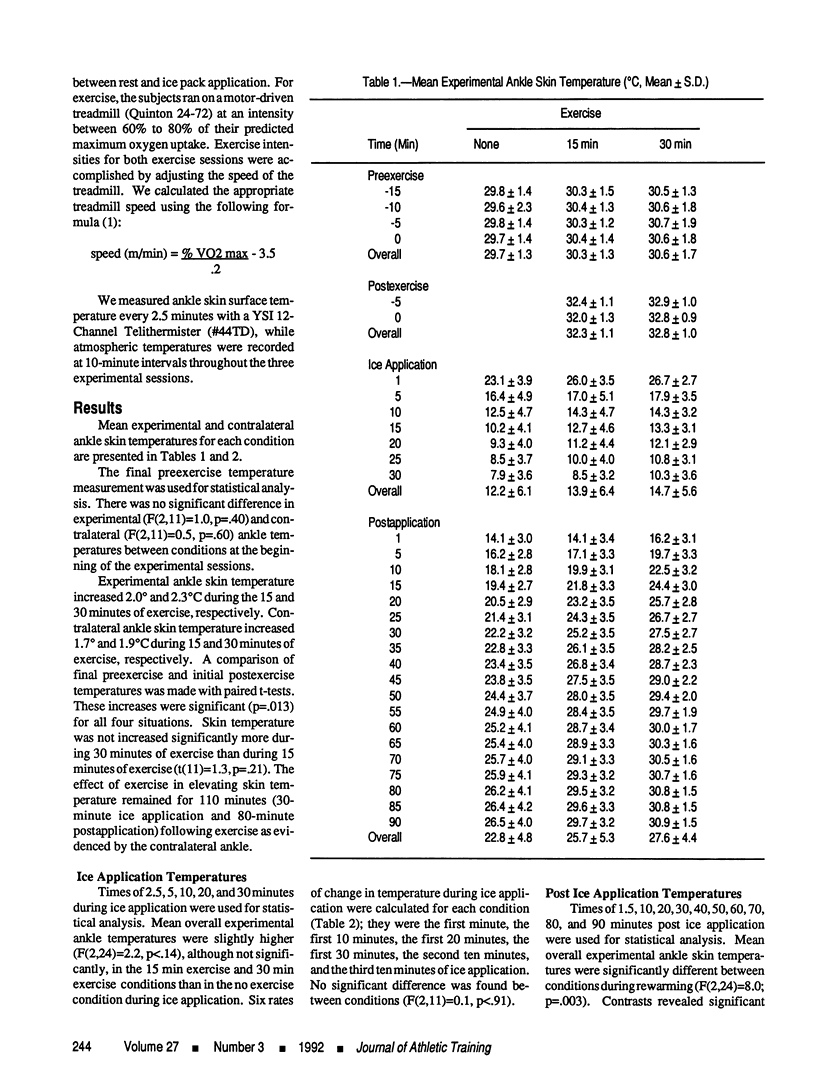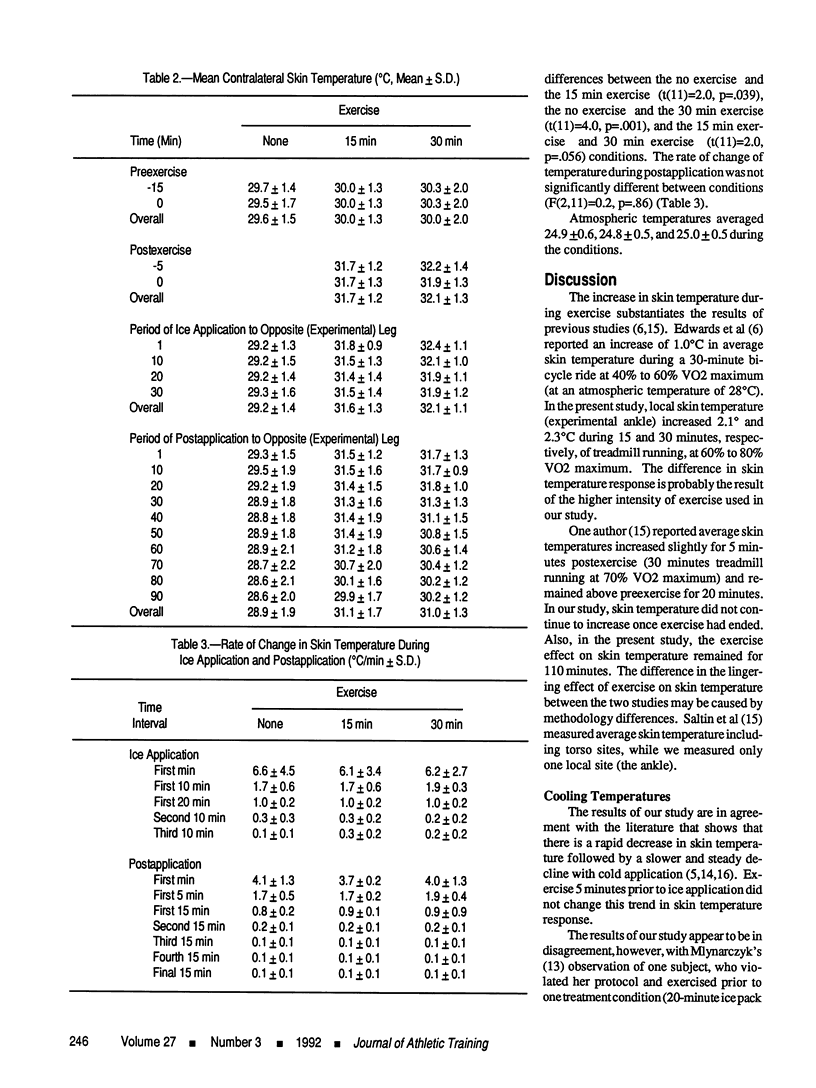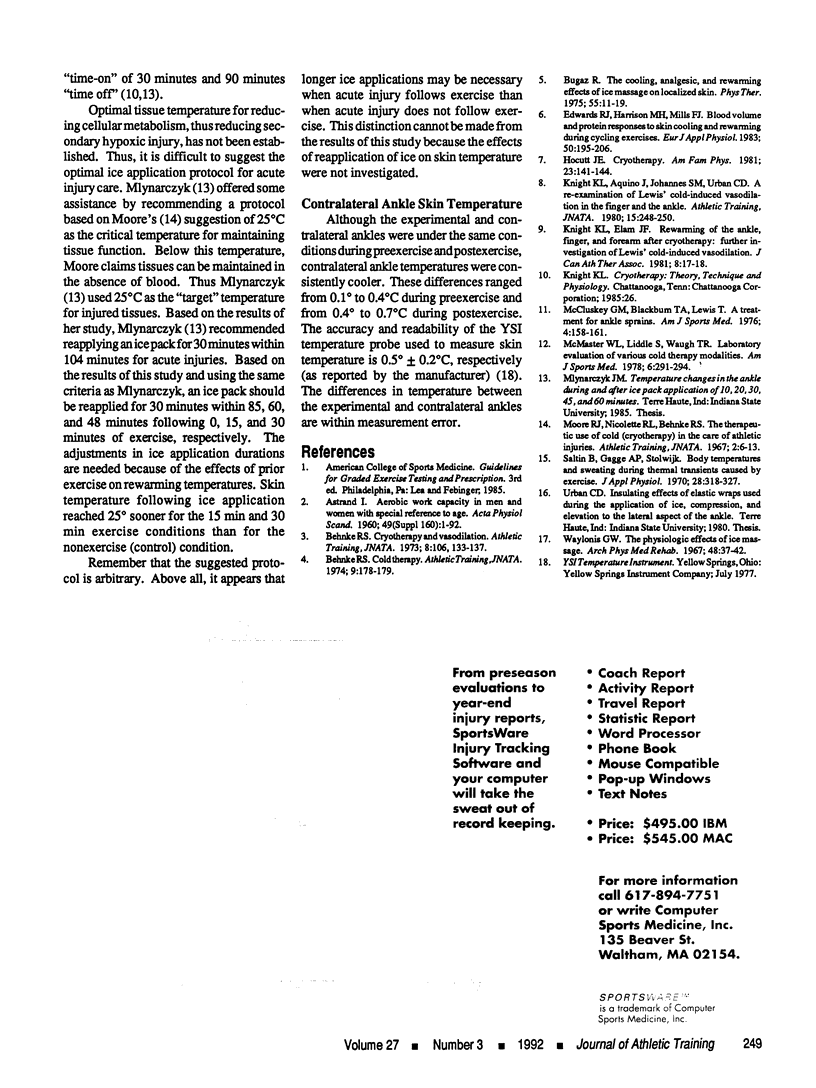Abstract
The effects of various durations of treadmill running on ankle skin temperature response during and following ice application were investigated. We measured the ankle skin surface temperature of 12 male subjects with a telethermister (YSI Model 44) during each of three conditions: control and two exercise conditions that involved treadmill running for 15 or 30 minutes, followed by a 30-minute ice pack application and 90 minutes rewarming. The control condition involved no exercise prior to ice pack application. Ankle skin temperature increased significantly during 15 and 30 minutes of exercise, although the temperature difference between the two conditions was not statistically significant. Mean skin cooling temperatures were slightly, though not significantly, higher following exercise than following no exercise. The rate of cooling, however, was unaffected by prior exercise. Mean skin temperatures during rewarming were significantly higher following the exercise conditions, but the rate of rewarming was unchanged by exercise. Mean rewarming temperatures were higher in the 30-minute exercise condition than in the 15-minute exercise condition. Longer ice applications or shorter reapplications may be necessary following exercise of at least 15 minutes, but further investigation is necessary to substantiate this supposition.
Full text
PDF




Selected References
These references are in PubMed. This may not be the complete list of references from this article.
- ASTRAND I. Aerobic work capacity in men and women with special reference to age. Acta Physiol Scand Suppl. 1960;49(169):1–92. [PubMed] [Google Scholar]
- Bugaj R. The cooling, analgesic, and rewarming effects of ice massage on localized skin. Phys Ther. 1975 Jan;55(1):11–19. doi: 10.1093/ptj/55.1.11. [DOI] [PubMed] [Google Scholar]
- Edwards R. J., Harrison M. H., Cochrane L. A., Mills F. J. Blood volume and protein responses to skin cooling and warming during cycling exercise. Eur J Appl Physiol Occup Physiol. 1983;50(2):195–206. doi: 10.1007/BF00422158. [DOI] [PubMed] [Google Scholar]
- Hocutt J. E., Jr Cryotherapy. Am Fam Physician. 1981 Mar;23(3):141–144. [PubMed] [Google Scholar]
- McCluskey G. M., Blackburn T. A., Jr, Lewis T. A treatment for ankle sprains. Am J Sports Med. 1976 Jul-Aug;4(4):158–161. doi: 10.1177/036354657600400406. [DOI] [PubMed] [Google Scholar]
- McMaster W. C., Liddle S., Waugh T. R. Laboratory evaluation of various cold therapy modalities. Am J Sports Med. 1978 Sep-Oct;6(5):291–294. doi: 10.1177/036354657800600513. [DOI] [PubMed] [Google Scholar]
- Saltin B., Gagge A. P., Stolwijk J. A. Body temperatures and sweating during thermal transients caused by exercise. J Appl Physiol. 1970 Mar;28(3):318–327. doi: 10.1152/jappl.1970.28.3.318. [DOI] [PubMed] [Google Scholar]
- Waylonis G. W. The physiologic effects of ice massage. Arch Phys Med Rehabil. 1967 Jan;48(1):37–42. [PubMed] [Google Scholar]


